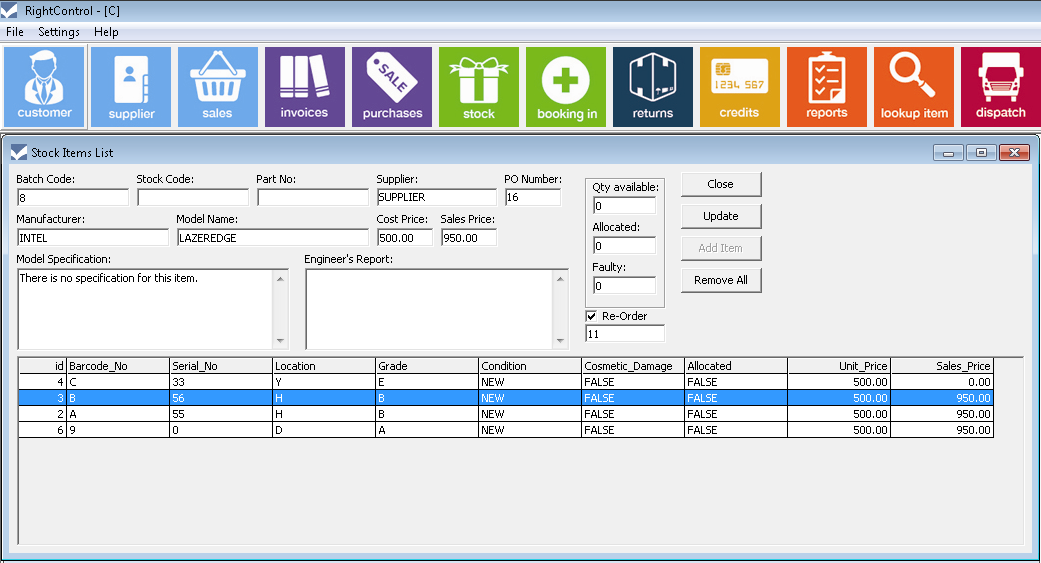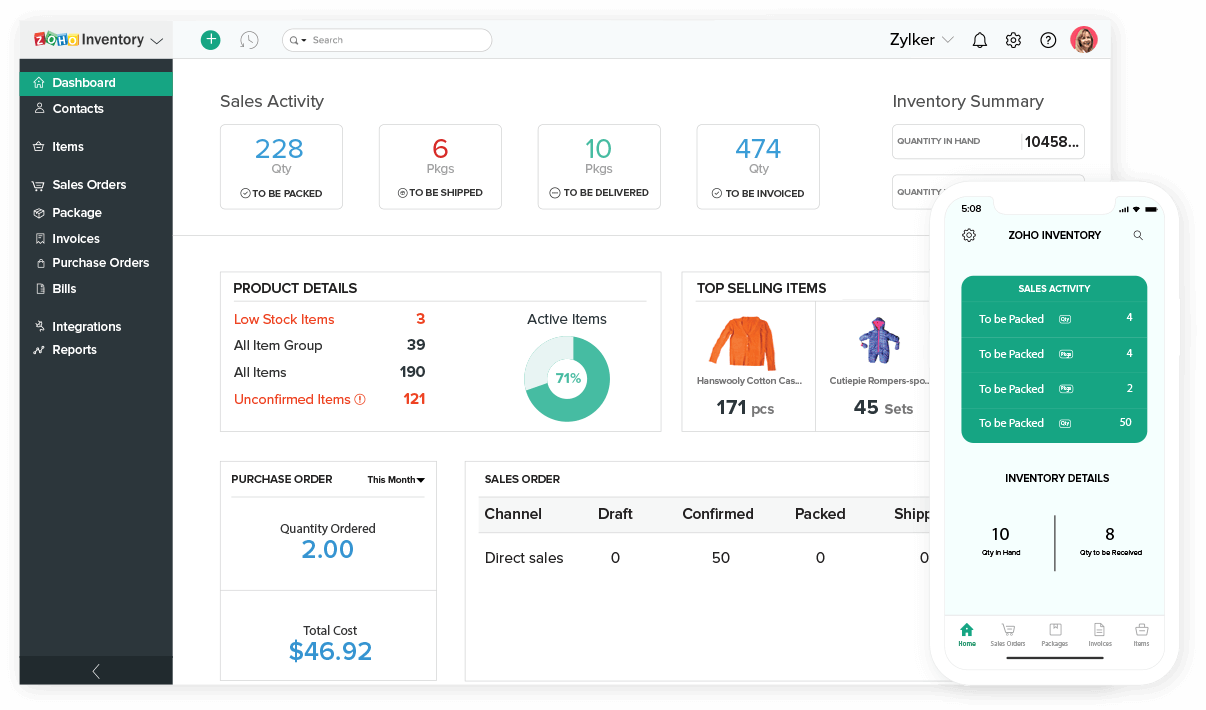Inventory system software for small businesses has emerged as a game-changer, offering a plethora of benefits that can streamline operations, reduce costs, and drive growth. This guide delves into the essential features, advantages, and implementation strategies of inventory management software, empowering small businesses to make informed decisions and unlock its full potential.
With its ability to automate inventory tracking, optimize stock levels, and provide real-time insights, inventory system software is transforming the way small businesses manage their inventory, leading to increased efficiency, profitability, and customer satisfaction.
Inventory System Software Features for Small Businesses

Inventory management is a critical aspect of any business, and small businesses are no exception. The right inventory system software can help small businesses streamline their operations, improve stock accuracy, and reduce shrinkage.
When selecting inventory system software, small businesses should prioritize the following features:
- Ease of use:The software should be easy to learn and use, even for non-technical users.
- Scalability:The software should be able to grow with your business as your inventory needs change.
- Affordability:The software should be affordable for small businesses.
- Integration with other business systems:The software should be able to integrate with other business systems, such as accounting and CRM software.
Inventory system software can automate or streamline a variety of inventory management tasks, including:
- Tracking inventory levels
- Managing stock locations
- Generating purchase orders
- Receiving and processing shipments
- Tracking customer orders
- Performing inventory audits
By automating or streamlining these tasks, inventory system software can help small businesses save time and money. Additionally, inventory system software can improve stock accuracy and reduce shrinkage by providing real-time visibility into inventory levels.
Benefits of Using Inventory System Software
There are many benefits to using inventory system software, including:
- Improved stock accuracy:Inventory system software can help businesses track inventory levels in real time, which can lead to improved stock accuracy.
- Reduced shrinkage:Inventory system software can help businesses identify and reduce shrinkage, which is the loss of inventory due to theft, damage, or other factors.
- Increased efficiency:Inventory system software can help businesses automate or streamline a variety of inventory management tasks, which can lead to increased efficiency.
- Improved customer service:Inventory system software can help businesses track customer orders and provide real-time visibility into inventory levels, which can lead to improved customer service.
- Increased profitability:By improving stock accuracy, reducing shrinkage, and increasing efficiency, inventory system software can help businesses increase profitability.
If you are a small business owner, investing in inventory system software is a wise decision. The right software can help you streamline your operations, improve stock accuracy, reduce shrinkage, and increase profitability.
Benefits of Using Inventory System Software

Inventory system software offers numerous benefits for small businesses, including cost savings, improved efficiency, and optimized inventory levels. By automating inventory management tasks, businesses can streamline their operations and free up valuable time and resources.
Cost-Saving Benefits
Inventory system software can significantly reduce labor costs associated with manual inventory management. Automated inventory tracking eliminates the need for manual counting and record-keeping, saving businesses time and effort. Additionally, by providing real-time inventory visibility, businesses can identify and reduce waste from overstocking or understocking, resulting in cost savings on inventory purchases.
Improved Efficiency
Inventory system software improves efficiency by automating inventory-related tasks. Businesses can easily track inventory levels, generate reports, and manage orders in one centralized system. This streamlined process reduces errors, improves accuracy, and frees up employees to focus on other value-added activities.
Optimized Inventory Levels
Inventory system software provides businesses with real-time insights into their inventory levels. This allows them to optimize their inventory by identifying slow-moving items and adjusting stock levels accordingly. By avoiding overstocking, businesses can reduce carrying costs and improve cash flow.
Additionally, by maintaining optimal inventory levels, businesses can prevent stockouts, which can lead to lost sales and customer dissatisfaction.
Implementing and Managing Inventory System Software

Implementing inventory system software can streamline your operations and improve accuracy. Here’s a checklist to guide you through the process:
Data Migration, Inventory system software for small business
- Gather all necessary inventory data from existing systems or manual records.
- Clean and organize the data to ensure accuracy and consistency.
- Establish a data migration plan to transfer data to the new system.
- Test the data migration process thoroughly to verify data integrity.
Training
- Develop a comprehensive training program for users on the new system.
- Cover all aspects of the software, including data entry, reporting, and troubleshooting.
- Provide hands-on training and support to ensure user proficiency.
Ongoing Management
Once the software is implemented, regular maintenance is crucial:
Updates
- Install software updates promptly to ensure the latest features and security enhancements.
- Monitor for software updates and schedule installations during off-peak hours.
Data Backups
- Create regular backups of your inventory data to protect against data loss.
- Store backups in a secure location, separate from the primary system.
- Test backups periodically to ensure they are complete and accessible.
Troubleshooting
- Establish a process for identifying and resolving inventory management issues.
- Provide users with access to support resources, such as documentation and online forums.
- Monitor the system for errors and performance issues.
Advanced Features of Inventory System Software: Inventory System Software For Small Business

Advanced features in inventory system software provide businesses with enhanced capabilities to optimize inventory operations and improve profitability. These features include inventory forecasting, demand planning, and warehouse management.
Inventory Forecasting
Inventory forecasting enables businesses to predict future demand for products based on historical data and market trends. This helps businesses avoid overstocking or understocking, leading to reduced carrying costs and improved customer satisfaction. For example, a clothing retailer can use inventory forecasting to predict demand for different clothing items based on factors such as seasonality, fashion trends, and weather patterns.
This information allows the retailer to optimize inventory levels and ensure availability of popular items while minimizing the risk of excess inventory.
Demand Planning
Demand planning takes inventory forecasting a step further by considering external factors such as market conditions, economic trends, and competitor activities. It helps businesses plan for future demand and adjust inventory levels accordingly. For example, a manufacturer can use demand planning to anticipate changes in demand due to new product launches, industry regulations, or economic downturns.
This allows the manufacturer to adjust production schedules and inventory levels to meet changing market conditions.
Warehouse Management
Warehouse management features provide businesses with tools to optimize warehouse operations, including inventory tracking, order fulfillment, and space utilization. This helps businesses improve efficiency, reduce costs, and enhance customer service. For example, a warehouse can use a warehouse management system to track inventory levels in real-time, automate order fulfillment processes, and optimize storage space allocation.
This leads to reduced labor costs, faster order fulfillment, and improved inventory accuracy.The potential return on investment (ROI) associated with implementing advanced inventory system software features can be significant. Businesses can experience reduced inventory carrying costs, improved customer satisfaction, increased sales, and enhanced operational efficiency.
These benefits often outweigh the cost of implementing the software, resulting in a positive ROI.
Wrap-Up
In conclusion, inventory system software is an indispensable tool for small businesses seeking to optimize their inventory operations. By embracing its advanced features, businesses can gain a competitive edge, reduce waste, and maximize their profitability. Investing in the right inventory system software can be a catalyst for growth, efficiency, and success in today’s dynamic business landscape.
Answers to Common Questions
What are the key features of inventory system software for small businesses?
Essential features include inventory tracking, stock level optimization, reporting and analytics, purchase order management, and integration with other business systems.
How can inventory system software help small businesses save money?
By reducing labor costs through automation, optimizing inventory levels to minimize waste, and improving efficiency to increase productivity.
What are the benefits of using advanced features like inventory forecasting and demand planning?
These features enable businesses to anticipate future demand, optimize stock levels, and make data-driven decisions to maximize profitability.